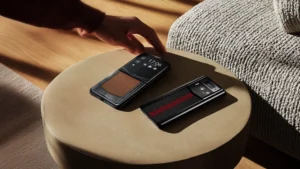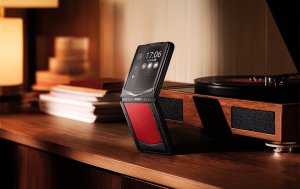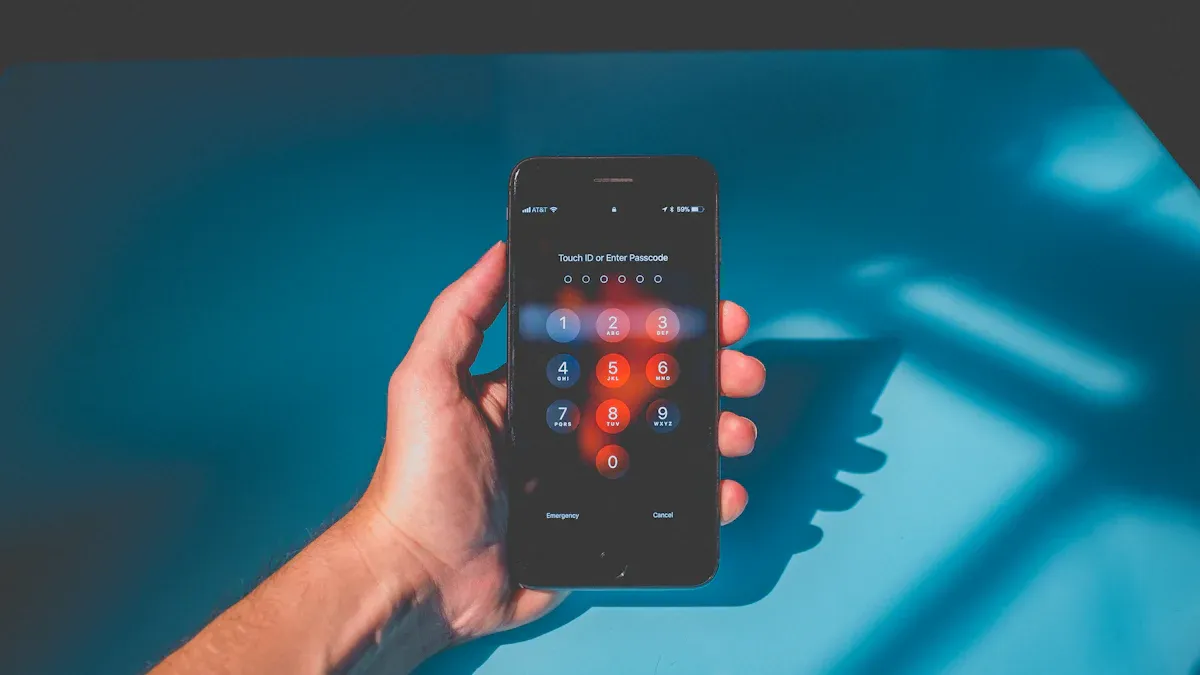
A security phone helps you protect your data in a smart way. Many people believe their phones are safe if they use official app stores or have new software. But this is not always true. Here are some common myths:
-
Apps from official stores can still be dangerous.
-
iOS devices are not always safe.
-
Hackers attack everyone, not just big companies.
You can control your own security. Small changes help you protect your data and avoid hidden dangers.
Key Takeaways
-
Pick a strong 6-digit PIN for your phone. Turn on fingerprint or face unlock for better safety.
-
Make sure device encryption is on. Keep your phone and apps updated to stop hackers.
-
Always use multi-factor authentication and a VPN. This is very important on public Wi-Fi. It gives you more protection.
-
Only get apps from trusted stores. Limit what apps can do to stop data theft and malware.
-
Back up your data often. Use remote lock and wipe if your phone gets lost or stolen.
Secure Access
Strong PIN or Passcode
Setting a strong PIN or passcode is your first line of defense. Many people use a 4-digit PIN because it is quick to enter. However, a 6-digit PIN is much safer. A 4-digit PIN has 10,000 possible combinations, but a 6-digit PIN jumps to over 100,000. This makes it much harder for someone to guess or use a machine to break in. For example, on older Android versions, a robot could brute force a 4-digit PIN in about 30 seconds, but a 6-digit PIN takes much longer.
|
Android Version |
4-Digit PIN Brute Force Time |
6-Digit PIN Brute Force Time |
|---|---|---|
|
Android 4.3 and below |
30 seconds |
50 seconds |
|
Android 4.4 |
1.25 minutes |
125 minutes |
You should always choose a PIN with at least 6 digits. This simple step helps protect your data from quick attacks.
Biometric Authentication
Biometric authentication uses your fingerprint or face to unlock your phone. This method is both fast and secure. About 81% of smartphones worldwide now use biometric authentication. You probably already have this feature on your device. When you enable it, you make it much harder for someone else to get into your phone, even if they know your PIN. Biometric methods are also less likely to be tricked by common attacks like guessing or brute force. Using both a strong PIN and biometrics gives you double protection.
Auto-Lock Settings
Auto-lock is a feature that locks your phone after a short period of inactivity. If you leave your phone on a table or in a public place, auto-lock keeps your information safe. Without auto-lock, anyone can pick up your phone and access your apps, emails, and banking details right away. Setting your auto-lock timer to 30 seconds or 1 minute is a smart move. This way, you protect your data even if you forget to lock your phone yourself.
Tip: Always check that auto-lock is enabled, especially if you use features like Secure Folder or multitask often. This small habit can stop instant compromise.
Multi-Factor Authentication
Multi-factor authentication (MFA) adds another layer of security to your accounts. With MFA, you need more than just a password to log in. You might enter a code from an app, use your fingerprint, or tap a prompt on your phone. Experts say MFA can block about 99.9% of automated cyber attacks. Even if someone steals your password, they cannot get in without the second factor. This is one of the best ways to protect your data on your phone.
Attackers try many tricks to bypass MFA, such as:
-
Phishing for codes by making fake login pages.
-
Flooding you with approval requests until you click one by mistake.
-
Intercepting your codes using man-in-the-middle attacks.
-
SIM swapping to steal your text messages.
-
Using social engineering to trick you into sharing codes.
To stay safe, always check where requests come from and never share your codes. Use app-based or biometric MFA instead of SMS when possible.
Note: MFA is not perfect, but it stops most attacks. Combine it with strong PINs and biometrics for the best results.
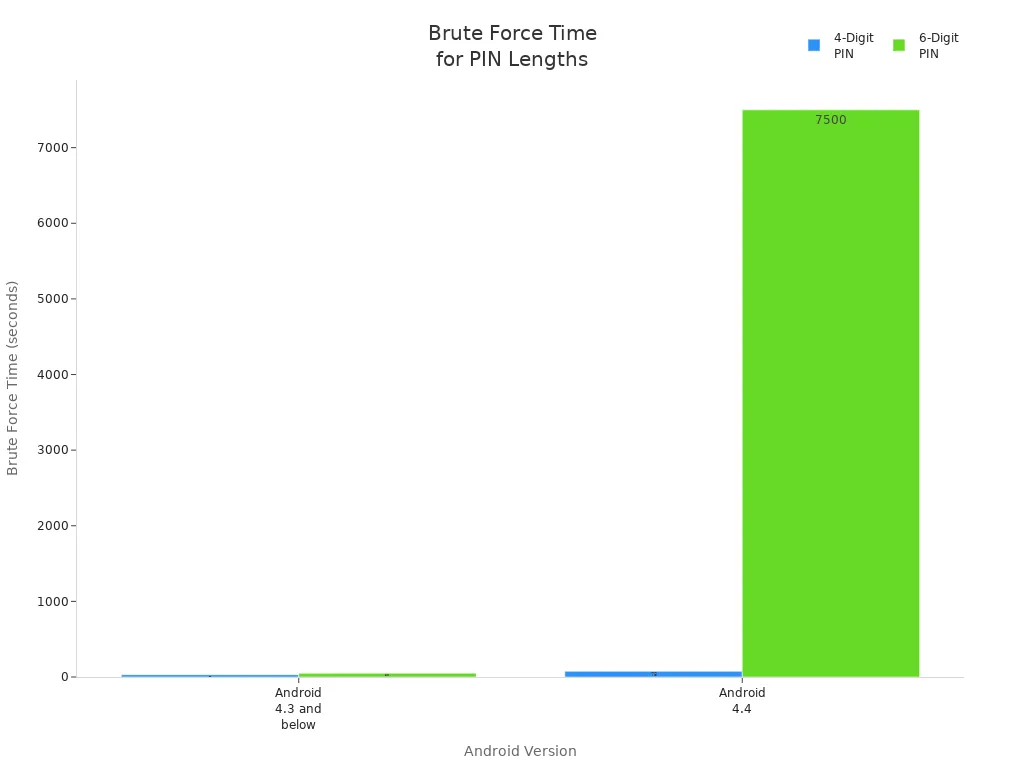
By following these steps, you make it much harder for anyone to access your phone or accounts without your permission. These habits help protect your data every day.
Protect Your Data with Encryption
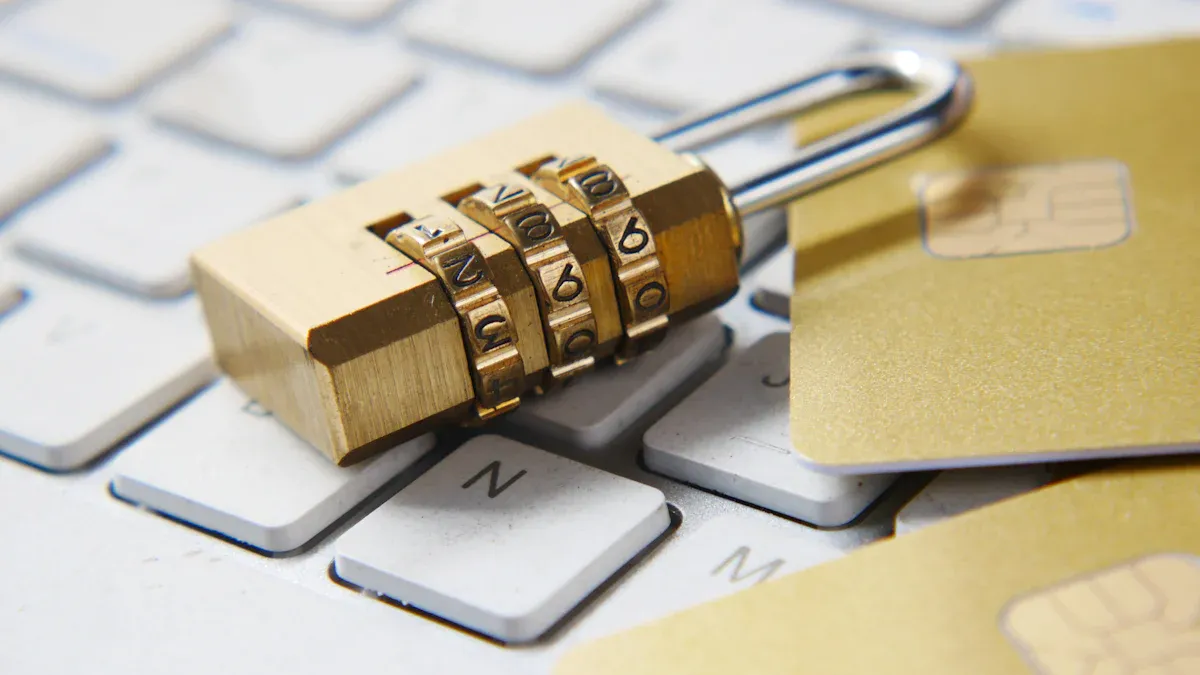
Enable Device Encryption
If someone steals your phone, you want your data safe. Device encryption helps keep your information private. When you turn on encryption, your phone mixes up your data. Only your PIN, password, or fingerprint can unlock it. This makes it much harder for anyone to read your files.
-
Encryption connects your data to your lock screen and phone hardware.
-
Thieves need your PIN or fingerprint to get to anything.
-
Turning off USB debugging and using anti-theft apps helps even more.
-
Remote wipe and tracking apps give thieves less time to try things.
Most new phones use file-based encryption. Each file gets its own lock and key. When you restart your phone, your data stays locked until you unlock the screen. This is called the “Before First Unlock” state. Even skilled hackers have trouble getting your data in this state. After you unlock your phone, some risks remain, like notifications showing, but encryption still helps protect your data.
Tip: Go to your phone’s settings and look for “Security” or “Encryption.” Follow the steps to turn it on. It only takes a few minutes, and it helps keep your data safe.
Keep Software Updated
Updates do more than add new features. They fix security problems that hackers use. If you skip updates, your phone is easier to attack. Both your operating system and your apps need updates.
-
Updates fix weak spots that could let someone steal your data.
-
New updates often make encryption stronger.
-
Some updates add new security tools, like better biometric locks.
Set your phone to update by itself if you can. Check your app store for updates to your favorite apps. This easy habit helps keep your data safe every day.
Note: If your phone stops getting updates, think about getting a newer one. Old phones are easier for hackers to attack.
Remote Lock and Wipe
Losing your phone can be scary, but you have ways to protect your data. Remote lock and wipe let you control your phone from far away. If you lose your phone, you can lock it or erase everything before anyone else gets in.
-
You can use built-in tools like Find My Mobile or Stolen Device Protection.
-
Remote lock lets you show a message on the screen, so someone can contact you.
-
Remote wipe erases all your data, so thieves get nothing.
-
These tools work only if your phone is on and online.
-
Some advanced tools, like Samsung Knox Guard, can lock your phone even when it’s offline for a while.
Act quickly if you lose your phone. The faster you lock or wipe it, the less chance someone has to steal your data. Always back up your data, so you do not lose important photos or contacts if you need to wipe your phone.
Pro Tip: Write down your phone’s IMEI number and keep it somewhere safe. This helps you report your phone if it gets stolen.
Table: Quick Steps to Protect Your Data with Encryption
|
Step |
What to Do |
Why It Matters |
|---|---|---|
|
Enable Device Encryption |
Turn on encryption in security settings |
Makes data unreadable to thieves |
|
Keep Software Updated |
Update OS and apps regularly |
Fixes security holes |
|
Set Up Remote Lock & Wipe |
Activate Find My Device or similar feature |
Lets you erase or lock phone remotely |
|
Back Up Data |
Use cloud or computer backups |
Prevents loss if you wipe your phone |
Remember, these steps work best together to protect your data. No single step is perfect, but together they make your phone much safer.
Safe Network Use
Use a VPN
Public Wi-Fi can put your data in danger. A VPN (Virtual Private Network) helps keep you safe. It makes a secure tunnel for your information. Hackers cannot read your messages or passwords. Even if they try, the VPN protects you. Here is how a VPN keeps you safe:
-
A VPN scrambles your data before it leaves your phone. This makes it hard for spies to read.
-
If you join a fake or unsafe Wi-Fi, the VPN blocks attackers. They cannot steal your login details.
-
The VPN hides your real IP address and location. This makes it hard for hackers and websites to track you.
-
VPN encryption stops man-in-the-middle attacks and eavesdropping.
You can find many VPN apps in app stores. Pick one with good reviews and clear privacy rules. Many people use VPNs now. In Asia and the Middle East, up to 61% of people use VPNs on their phones. In North America, about 42% of users trust VPNs for mobile safety. This shows more people use VPNs to protect their data.
|
Region |
VPN Adoption Rate (%) |
Notes/Trends |
|---|---|---|
|
Asia |
38–61 |
Indonesia, India, Qatar lead globally |
|
Middle East |
36–59 |
Qatar, UAE highest |
|
North America |
25–42 |
US at top, Canada/Mexico slightly lower |
|
Europe |
6–15 |
UK, Netherlands, France rising |
|
Latin America |
~31 |
Brazil, Mexico |
|
Africa |
<4 |
Variable, generally lower |
|
Mobile Usage |
~69% |
VPN use via smartphones is now more common |
Tip: Always turn on your VPN when using public Wi-Fi. This habit helps keep your personal data safe.
Connect to Trusted Wi-Fi Only
Not all Wi-Fi networks are safe to use. Public Wi-Fi in places like airports or cafes can be risky. Hackers set up fake hotspots or use weak security. They want to steal your data. Here are some dangers you may face on public Wi-Fi:
|
Risk Type |
Explanation |
|---|---|
|
Unencrypted Networks |
Hackers can steal data sent in plain text. |
|
Malicious Hotspots |
Fake Wi-Fi tricks you into connecting. Attackers can see your traffic. |
|
Man-in-the-Middle Attacks |
Attackers can change or steal your messages. This can lead to theft or account loss. |
|
Malware Distribution |
Hackers can put spyware or ransomware on your phone without you knowing. |
|
Packet Sniffing |
Criminals use tools to listen and take your private files or activities. |
Always connect to trusted Wi-Fi networks only. If you must use public Wi-Fi, do not log into your bank or shop online. Turn off automatic Wi-Fi connections in your settings. Use your mobile data if you can. These steps help you avoid hidden dangers and keep your data safe.
Note: If you are unsure about a Wi-Fi network, skip it or use your VPN. Your privacy is important!
App and Malware Safety
Download from Trusted Sources
To keep your data safe, only get apps from trusted places like the Google Play Store or Apple App Store. Fake apps are common in unofficial app stores. These fake apps can look real and use fake reviews or high download numbers to trick you. Cybercriminals make these apps to steal your personal information or put malware on your phone. Experts say fake apps are a bigger problem now because more people look for apps outside official stores. If you use trusted sources, you are less likely to download something dangerous.
Tip: Always check who made the app and read real user reviews before you install it. If anything seems strange, do not install the app.
Limit App Permissions
Apps sometimes ask for permissions they do not really need. Some permissions can put your privacy in danger if you are not careful. Bad apps use these permissions to steal your data or charge you money without you knowing. Here are some permissions you should be careful with:
-
READ_PHONE_STATE: Lets apps see your phone number and can sign you up for paid services. -
READ_SMS: Lets apps read your text messages, including codes. -
SEND_SMS: Lets apps send texts, sometimes to expensive numbers. -
READ_EXTERNAL_STORAGE: Gives access to your files and photos. -
ACCESS_COARSE_LOCATIONandACCESS_FINE_LOCATION: Tracks where you are. -
READ_CALL_LOG: Lets apps see your call history.
You can keep your data safe by only giving apps the permissions they really need. Go to your phone’s settings and check app permissions often. If an app asks for something that does not make sense, say no or delete the app.
Use Security Apps
Security apps help you find and stop malware before it can hurt your phone. New security apps use real-time scanning, cloud updates, and machine learning to catch threats. For example, tools like LimonDroid can find known malware with up to 97.82% accuracy. Machine learning apps can spot new or changing threats by watching how apps act. Many security apps also have extra features like anti-theft tools, web protection, and privacy checks.
|
Detection Method |
Example Tools |
Effectiveness Highlights |
|---|---|---|
|
Signature-based |
LimonDroid |
97.82% accuracy for known malware |
|
Machine Learning-based |
ML-SMEPF, IntruDTree |
Detects new and evolving threats with dynamic analysis |
Note: No security app is perfect, but using one gives you strong protection. Keep your security app updated so you are safe from new threats.
Smart Usage Habits
Avoid Suspicious Links
You get lots of messages and emails each day. Some have links that look safe but are actually tricks. Hackers use these links to try to steal your information or put malware on your phone. If you tap a strange link, you could go to a fake website. That site might ask for your password or other personal details. Always look at who sent the message before you click any link. If something seems weird, trust your feelings and do not click. Never type your login details on a site you reached from a strange message. This easy habit helps keep your data safe from phishing attacks.
Tip: If a friend sends you a link but the message feels odd, ask them first before you click.
Back Up Data Regularly
If you lose your phone, you could lose all your photos, contacts, and files. You can stop this by setting up regular backups. Turn on automatic backups so you do not forget. If you use your phone a lot and add new stuff every day, set your backup to run daily. If you use your phone less, weekly or monthly backups might be enough. Always use cloud backups for things like photos and app data. Before you update your phone or add new apps, do a quick backup just in case. Check your backup settings often and make sure your last backup is recent. This way, you can get your data back fast if something bad happens.
How to keep your backups fresh:
-
Turn on automatic cloud backups.
-
Pick daily or weekly backups based on how much you use your phone.
-
Back up before big updates.
-
Check your backup status often.
Making regular backups is one of the best ways to keep your data safe from loss.
Physical Security Tips
You can keep your data safe by protecting your phone in real life. Never leave your phone alone, even for a short time. Use a strong case or an anti-theft backpack when you travel. Put a special label or engraving on your phone to make it less tempting for thieves. Write down your phone’s serial number and IMEI and keep them in a safe place. If your phone is lost or stolen, tracking apps with remote wipe can help you erase your data. Always use strong passwords and turn on biometric locks. Do not leave your phone where people can see it in cars or on desks. These habits make it much harder for someone to steal your phone or get your data.
|
Physical Security Checklist |
Why It Matters |
|---|---|
|
Never leave phone unattended |
Stops easy theft |
|
Use tamper-resistant cases |
Makes stealing harder |
|
Mark/engrave your device |
Helps stop resale and helps recovery |
|
Record serial/IMEI numbers |
Helps you report and recover |
|
Enable tracking and remote wipe |
Lets you erase data if stolen |
Stay alert and use these habits every day to keep your data safe both online and offline.
You can protect your data by making smart choices every day. Start with strong passwords and biometrics. Keep your phone updated and use trusted apps. Review your security settings often. Here’s how regular checks help you stay safe:
-
Update your phone to block new threats.
-
Limit app permissions to reduce risks.
-
Turn on remote lock and wipe for lost phones.
-
Switch off Bluetooth and NFC when not needed.
-
Use strong authentication for better security.
-
Many people skip these steps, so stay ahead by checking your settings.
Small habits make a big difference. Stay alert, review your settings, and take charge of your privacy. Your actions matter—protect your data and keep your information safe!

